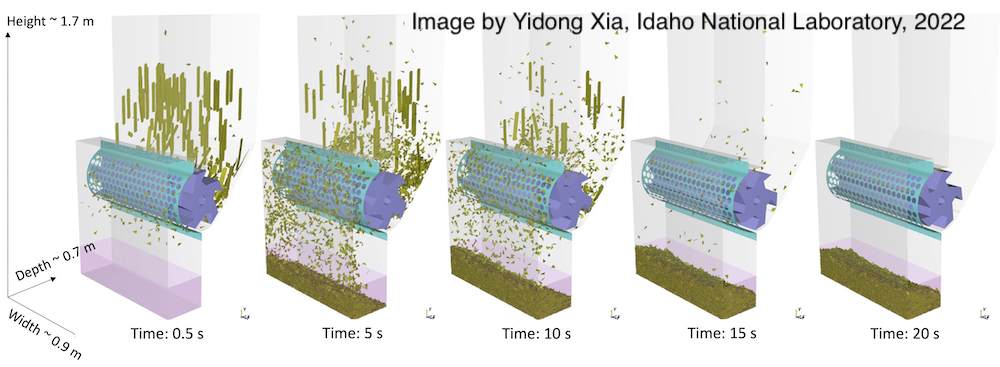2022 Annual Meeting
(137h) The Elastoplastic Flexural Behavior of Corn Stalks: An Experiment-Informed DEM Model and Process Simulation of a Knife Mill
Authors
Yidong Xia - Presenter, Idaho National Laboratory
Jordan Klinger, Idaho National Laboratory
Tiasha Bhattacharjee, Idaho National Laboratory
John E. Aston, Idaho National Laboratory
Vicki Thompson, Idaho National Laboratory
This work presents the experimental characterization of the biomechanical properties of size-controlled corn stalks through a three-point cyclic bending test and the adaptation of the obtained properties to a DEM bendable particle model. From the experimental characterization, the overall elastic bending limit decreased (from 3.4 to 1.7°) with increasing stalk size, while the effective bending stiffness increased (from 7.0 to 43 N·m·rad-1 in median value). The elastoplastic behavior of the stalks was more consistent and independent of stalk size where in median value the elastoplastic bending limit ranged from 6.9 to 8.8° and the ratio of elastoplastic stiffness to elastic stiffness ranged from 0.40 to 0.42. Statistical analysis of the samples and empirical results presented insightful expressions to relate the stalk scales to responses, or distributions in properties for a population of corn stalks (https://doi.org/10.1016/j.biosystemseng.2022.02.016). Parameterization of the DEM bendable particle model will be based on the experimental data of the elastic bending angle limits, elastoplastic bending angle limits, elastic bending stiffnesses, and plastic ratios. Comminution simulations of a large-scale knife mill will be conducted, where individual corn stalks will be approximated based on the parameterized DEM model. A particle breakage model in DEM will be further calibrated based on the produced particle size distribution (PSD) data from the corresponding physical comminution test of the knife mill.


